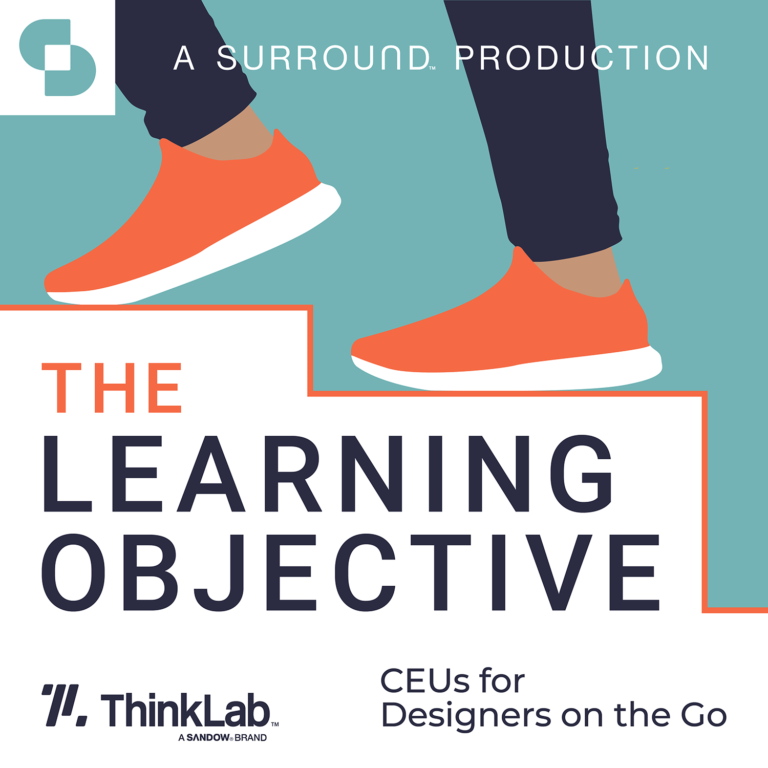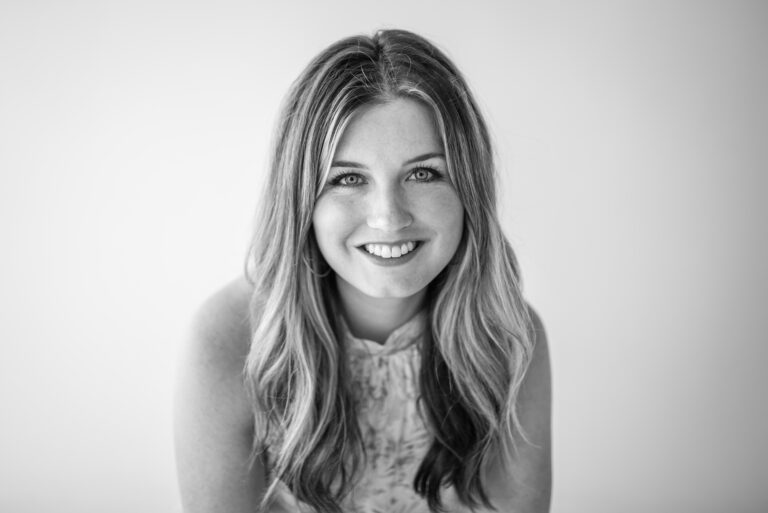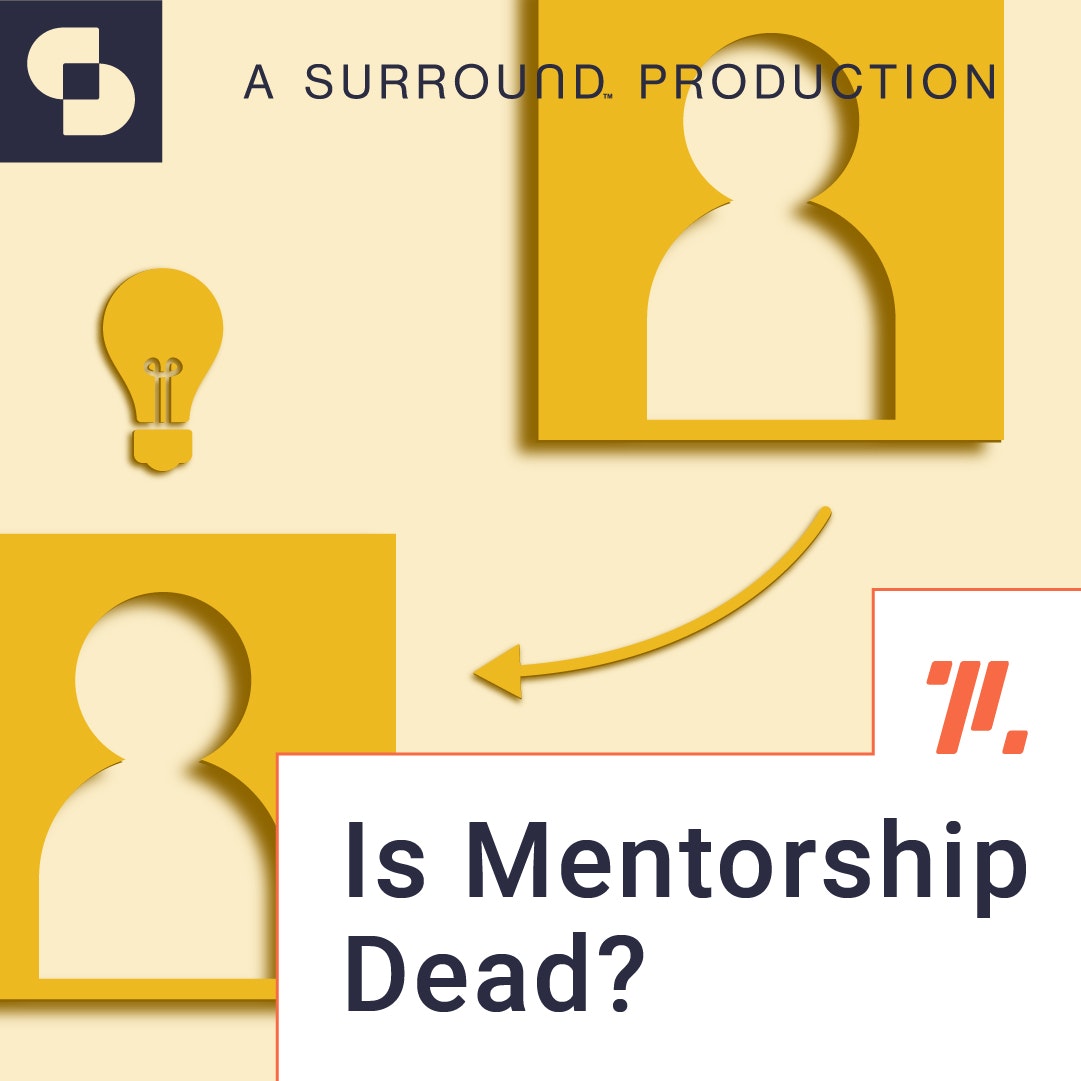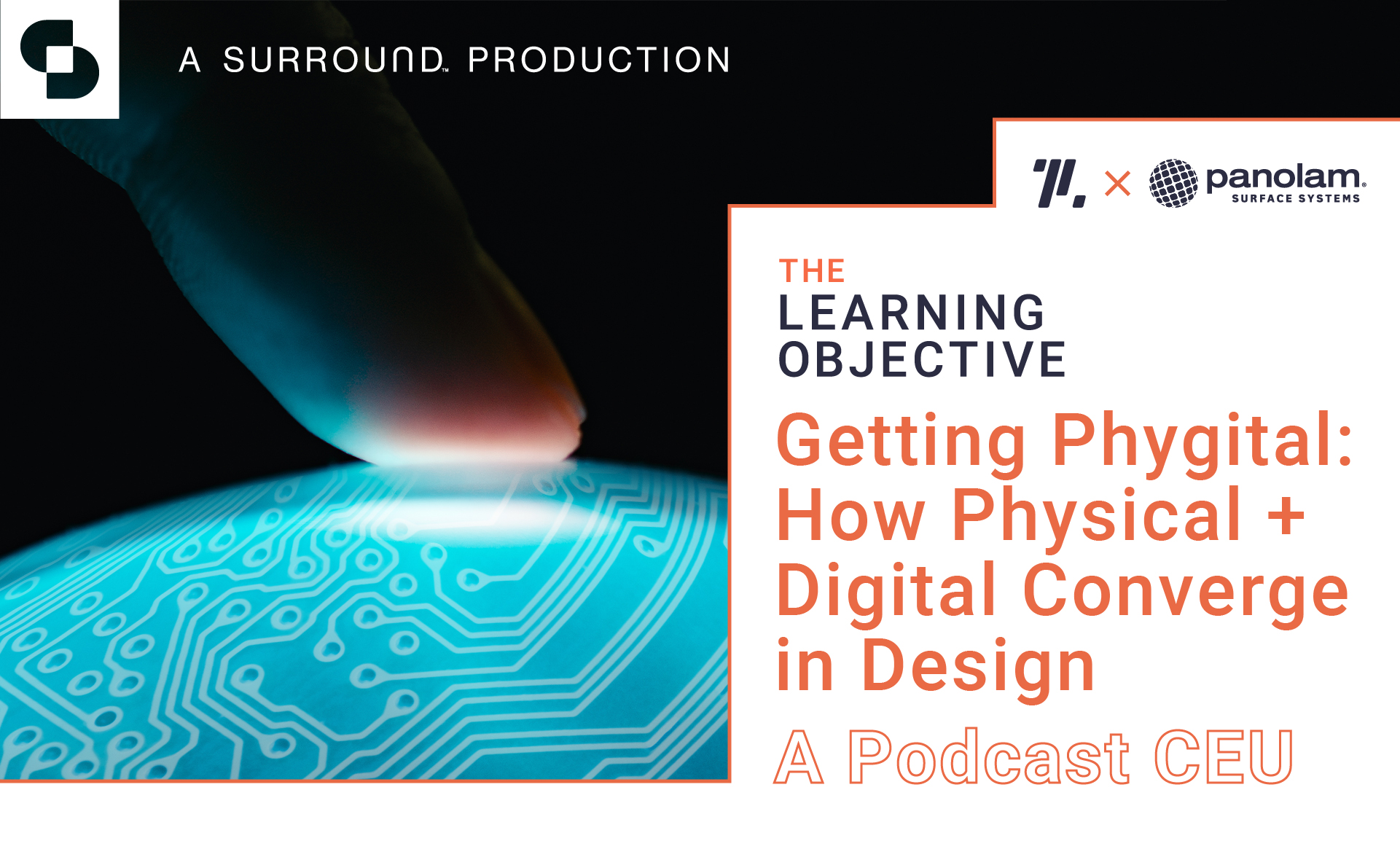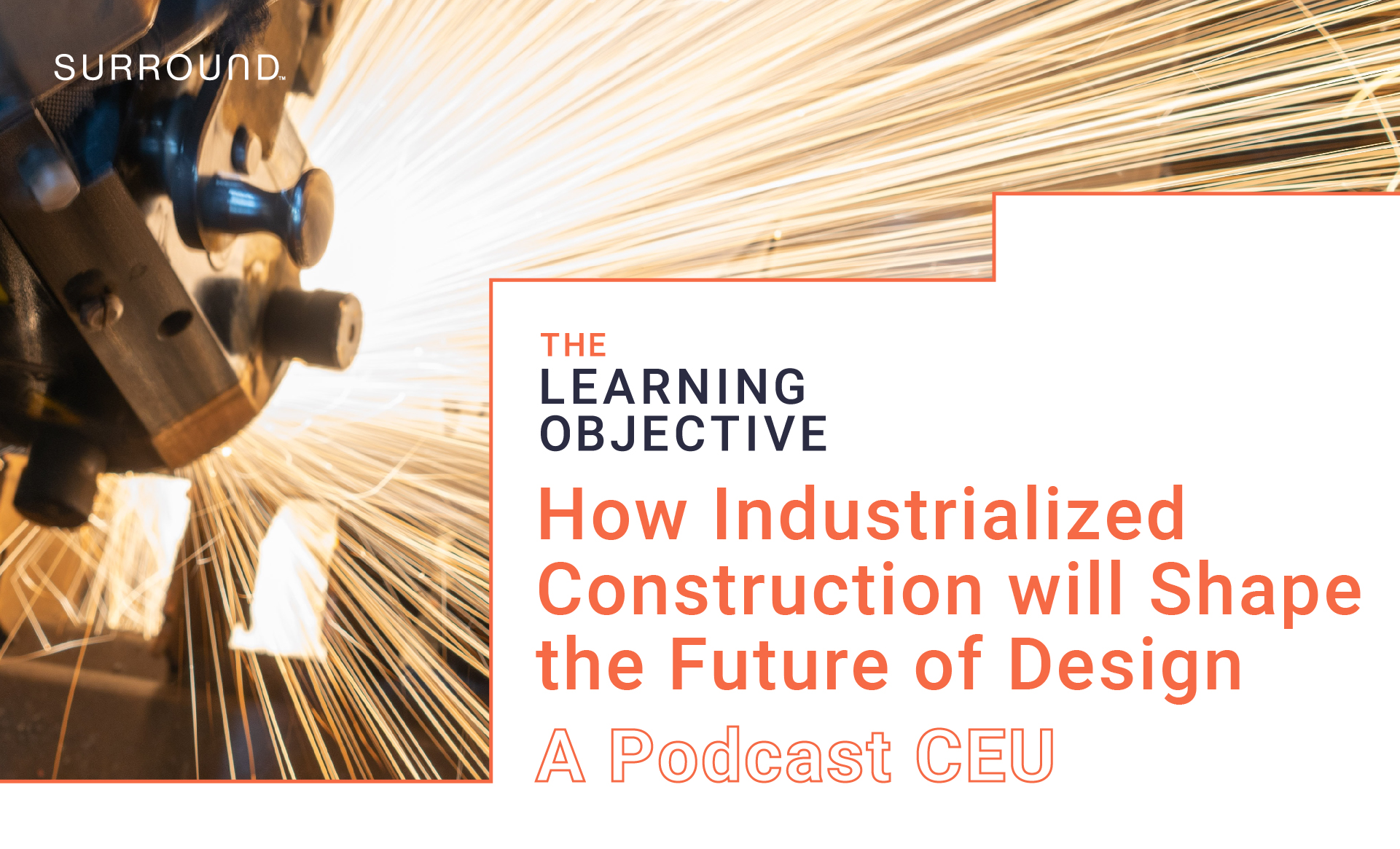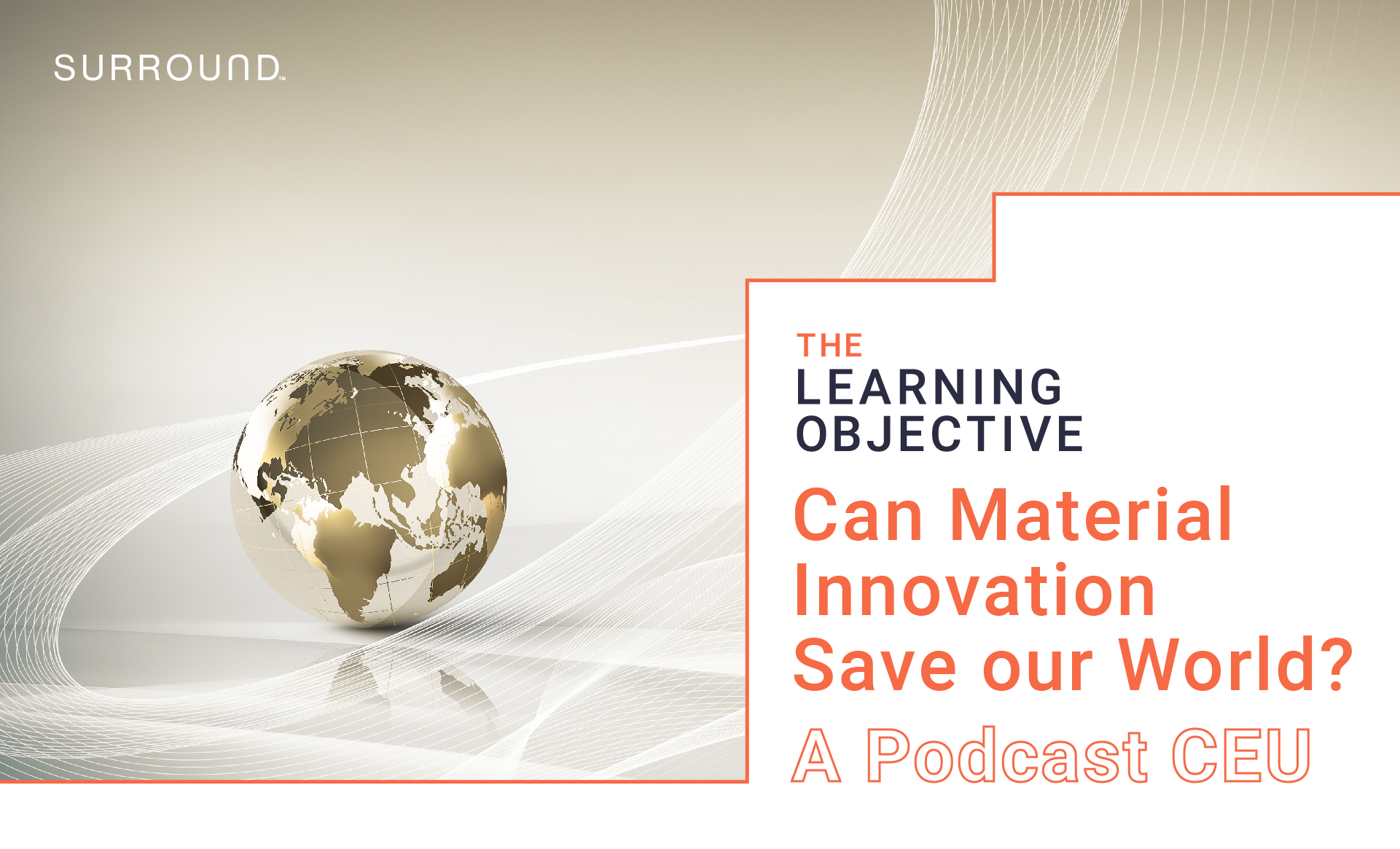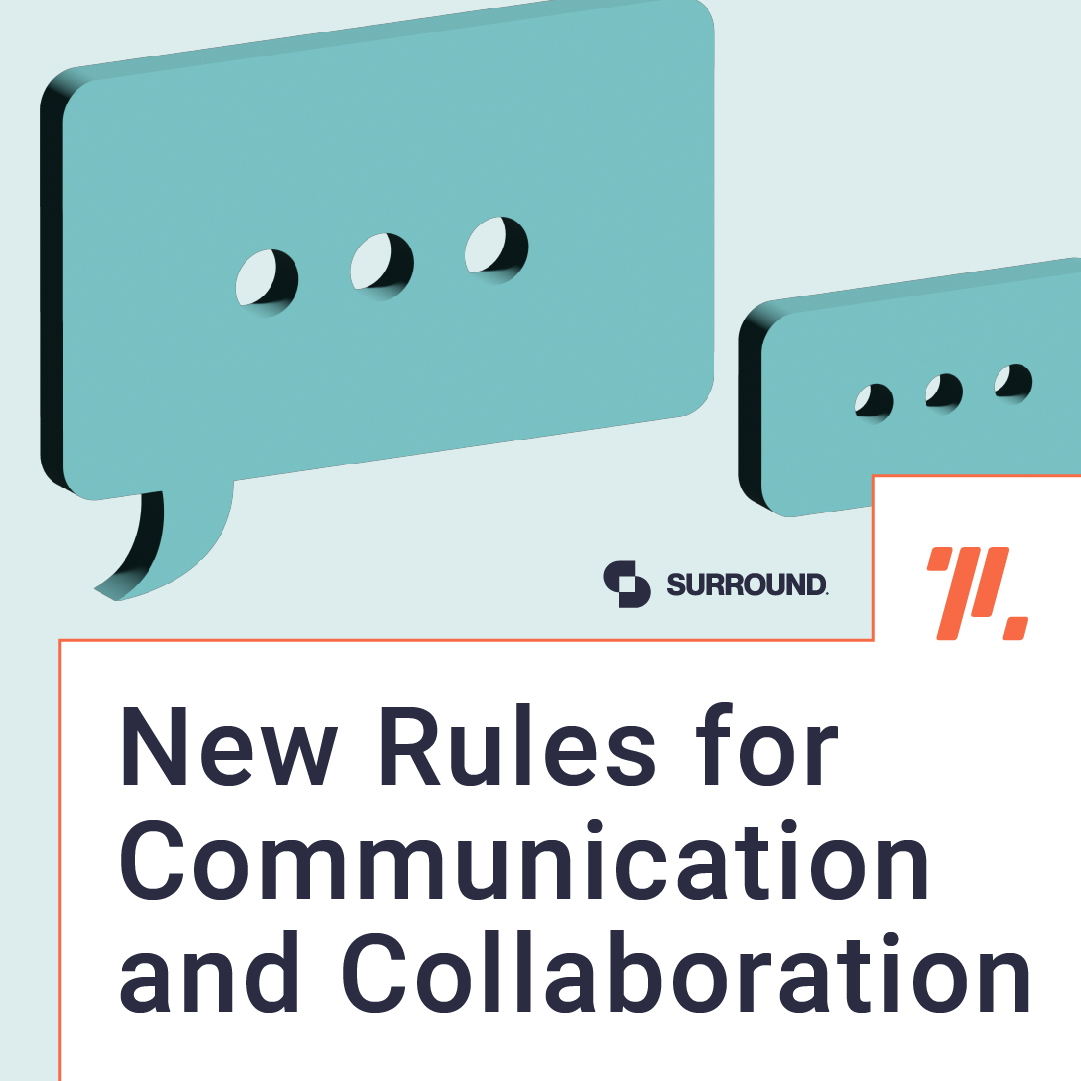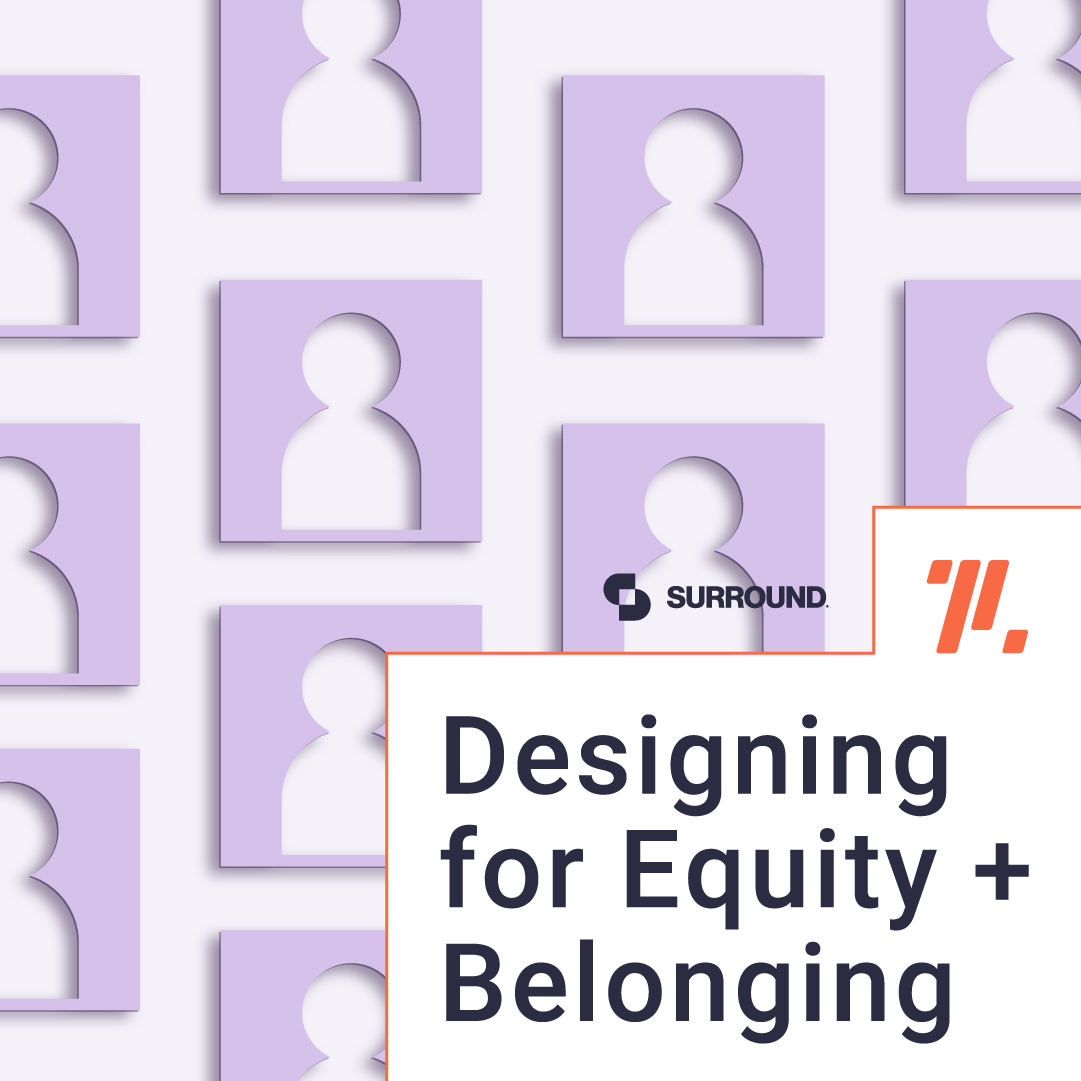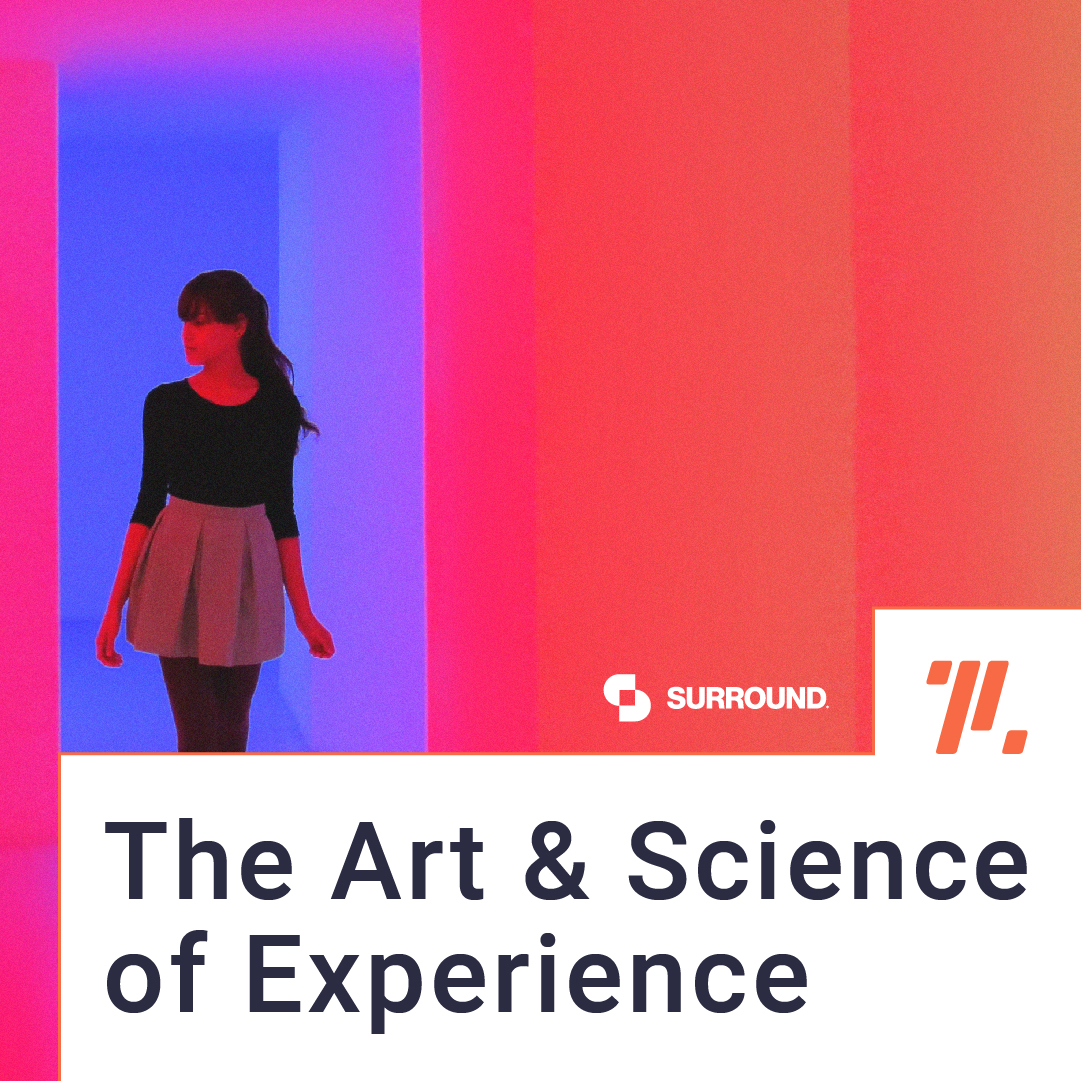In this episode, presented by Keilhauer, ThinkLab interviews designer Alanna Call and creativity researcher Keith Sawyer on how to foster the superpower of creativity and combat constraints on creative output.
Accredited for: IDCEC, AIA | 0.5 CEU/0.5 LU
After listening, you will be able to:
1. Identify the constraints happening in the world around us that are impacting creativity.
2. Assess how design teams can find creativity and innovation despite outside pressures.
3. Examine real-life examples of harnessing creativity “on demand” in projects.
4. Evaluate ways that groups can have the greatest creative output.
Alanna Call is the creative lead and storyteller at CID Design Group. She identifies the external pressures that are making it difficult for creativity to flourish in the design industry. And she shares the unique ways in which how her hospitality and branding firm is cultivating creativity — including placing a special importance on research and future-proofing.
Keith Sawyer is a professor at the University of North Carolina at Chapel Hill and a creativity researcher who has spent the past 10 years studying how people become designers and architects at universities. He describes common features of creative groups across disciplines and explains how four elements — technology, expectations, expertise, and deadlines — are currently constraining creativity.
Quiz: Want CEU credit for listening? Click here to take the quiz, and earn your certificate of completion.
How it works:
Step 1: Listen to the episode.
Step 2: Sign in at this link to take a short, 5-question quiz.
* Scoring an 80% or above on the quiz will earn you 0.5 CEU/0.5 LU.
Step 3: Upon passing the quiz, receive your certificate of completion via email from CEU sponsor Keilhauer.
Connect with our expert guests on LinkedIn:
Special thanks to our CEU episode sponsor, Keilhauer, for partnering with us to provide valuable insights on compelling topics for the design industry.
Meredith: [00:00:00] In 2010, Newsweek published an article about a research project from 1958 that measured the correlation between childrens’ creative ideas and how they went on to perform professionally as adults. Four hundred children were given a series of creativity tasks, such as “How would you make this toy more fun to play with?” Since then, scholars and researchers have been tracking the children, watching and tallying up their professional accomplishments.
What’s remarkable about this study is that the correlation to lifetime creative accomplishment was more than three times stronger based on childhood creativity than childhood IQ. Think IQ versus CQ. With each generation, the IQ score has gone up about 10 points, but when it comes to CQ or creativity, a reverse trend has been [00:01:00] identified.
American creativity scores began falling year over year, beginning in 1990. Now, experts aren’t exactly sure why these scores are declining. Some blame television, social media, or the educational system, while others say there just isn’t the same effort to nurture creativity in children.
Now, fast-forward to today, when designers are being asked to do more with less — there has never been a more important time to harness creativity on demand. Today’s episode is all about fostering the superpower of creativity. In part one, we’ll hear from a creative lead and storyteller on the unique ways that her firm is cultivating creativity, despite all of the pressures that the design industry faces.
And in part two, we’ll hear from a researcher in the field of creativity and find out what we can learn [00:02:00] from different disciplines about harnessing creativity.
I’m your host, Meredith Campbell, research and content development at ThinkLab, the research division of SANDOW Design Group. And this is The Learning Objective, the first podcast where you can receive CEU credit for listening.
I’m pleased to introduce Meghan Sherwin of Keilhauer, today’s episode sponsor, to walk you through the learning objectives.
Meghan: After listening to today’s episode, you’ll be able to:
- Identify the constraints happening in the world around us that are impacting creativity.
- Assess how design teams can find creativity and innovation despite outside pressures.
- Examine real-life examples of harnessing creativity “on demand” in projects.
- Evaluate ways that groups can have the greatest creative output.
Meredith: You’ll hear from Meghan again, later in the episode, with instructions on how you can obtain continuing education credit [00:03:00] through IDCEC or AIA for listening.
Alanna: My name is Alanna Call. I am the creative lead and storyteller at CID Design Group. We are a multi-family hospitality and branding firm, and my job is to really be the bridge between that creative strategy and design strategy. I guide a lot of the collaboration on the conceptual design process, story creation, and positioning strategy based upon research.
Meredith: We wanted to know what challenges CID Design Group is currently facing within their firm specifically. How do these challenges pose a threat to creativity? First, market fluctuation is impacting pricing and requiring value engineering to happen very late in the process — or, as Alanna calls it, “deep thought over deep pockets.”
Alanna: The temperature of our market right now is volatile. Budgets have [00:04:00] been impacted so drastically, and they’re impacting our design decisions, unfortunately, a little bit later in the game.
You spend so much time making the most perfect solution with the most thought-out research. And then when it gets VE’d, it is number one on the chopping block, and you are left like, “Uh-oh, what do we do? What are we supposed to do here?” And most of the time, it’s the FF&E team that’s out on the scene installing, where we’re trying to find some of those solutions.
On the market fluctuation, I was recently on a call with a GC for a project. And he said, “This pricing’s good for maybe two weeks.” I was like, “OK.” He was like, market fluctuation. So the sad thing is it’s been really hard, especially on renovation, because you’re making the decision, “Maybe we don’t even need to do this anymore. Maybe it’s just this. Maybe it’s just this.” So for us, the challenge has been “deep thought over deep pockets.”
Meredith: The second challenge: time. Or, as Alanna coins it, “designing on a dime with [00:05:00] no time.”
Alanna: And then, also, the challenge arises: You don’t have the time. You’re designing on a dime with no time. How do you do it? It’s like impossible.
Meredith: The third challenge: We’re digitally overdosed, yet the pressure is on more than ever to stay informed.
Alanna: The growing and changing accessibility to almost everything — there is a massive oversaturation of content. The rise in digitalization, where I used to get all of these magazine subscriptions to my house about design. Now, anyone can log online and see all of this information all the time. Pinterest, Instagram. I’m gonna say, TikTok is crazy. There was a very interesting statistic that the hashtag #TikTokMadeMeBuyIt alone had 10 billion views.
And if we’re not informing ourselves about this sort of stuff, we don’t know about it. So it’s working hand in hand against us and then with us, because [00:06:00] it’s informing these lifestyle habits of the people we’re designing for. If we don’t know about it, we’re, we’re at a little bit of a disadvantage.
Gen Z is a very cool market. They are activists, they are demanding inclusive engagement, and they are super purpose driven. And we don’t know that about them unless we make the research, because so much of their lives are online: who they are, what they want to do, how they choose to present themselves. So if we’re not looking, we just don’t know.
Meredith: We wanted to know: How has their team been able to find creativity and innovation despite, or even inspired by, these challenges? The first answer might surprise you: research.
Alanna: My number one answer to that is research, and inform yourself. Something I always like to say is we don’t ever want to create something that’s super trendy, because then it’s trendy and it goes out of style. But history, or the geography or the trees that grow in the area, that’ll never go out of [00:07:00] style. That will always be relevant.
The Douglas fir will always be an important driver to Portland. Whether it’s the dark greens of the actual pine needles themselves, or the bark, or just that silhouette itself, it’s very important. So we are making time to research.
Meredith: They’ve changed their entire business model to support this crucial step in their creative process.
Alanna: We’ve actually added roles for research because we believe in it so much. My role when I first started was very strictly research based. Now we have an assistant storyteller, and her role is very strictly research based. Our design futurist is strictly research based, because it really helps to support that creative process.
It helps us to keep a pulse on the emerging technology, as it relates to our work. It helps us to inform us about the past, about what has happened, what’s happening. What’s the architecture story of the past? What’s the design story of the past? What’s the people story of the past? And I [00:08:00] also feel like that research component encourages everyone to have a voice.
There is such a thing as creative burnout. But if you have everyone bringing something unique and thoughtful to the table, something’s going to come out of it.
Meredith: The second way that they’re responding to the challenge of information overload: edit, edit, edit.
Alanna: The ability to edit I think is very important. We have this plethora of information everywhere. I think [it helps] really doing that research and having an informed final product that you want to put out there, so that you can thoughtfully apply all of that research. The need to edit and look at things that strictly apply to what you need.
And I think that’s why our design futurist role is so incredibly important. She is at the forefront of all of this new technology, emerging innovation, emerging lifestyle segments. So, she researches all of that and breaks it neatly into all of the segments that apply to us and then filters it through to the [00:09:00] creative studio.
And then, as it relates to our projects, we focus our design core on, I’ll say, three buckets: history, your social environment, and then geographical. So, when I am guiding research and I’m leading our creative team, that’s where I will have them start. And then we will take all of that information and bring it to the team and say, “The first thing we have to do is edit.” Because not all of this is necessary for what we are creating, because we can’t be everything to everyone, but we can be almost everything to our key target demographic, lifestyle segment, psychometric, all of those sorts of things. We can do that if we think about it.
So I think that’s the challenge. There’s information overload, and knowing how to purposely put it where you need it and use it.
Meredith: CID Design Group has recognized the need for group creativity to arrive at the best solutions. The third key ingredient for overcoming these challenges [00:10:00] and finding solutions as a team is trust.
Alanna: The biggest thing is you have to get super scrappy. You have to get out of your own head and you have to feel like you’re at a safe place to do that. I think that’s one of the most key things to being creative is research and creating a safe place where everybody feels that they have a voice and everyone’s super, super valued.
Meredith: CID Design Group isn’t just building trust and collaboration in a typical studio environment. They’ve added hybrid policies into the mix, a challenge that many businesses have been faced with. Here’s how their firm policy works and how they’re able to build trust, thus enabling creativity regardless of the distance.
Alanna: So we have three basic categories of what we call our “work well anywhere” policy, which is as it sounds, we are working well anywhere. And it’s amazing. We have studio-based fully remote, which I myself am. I was in the [00:11:00] studio for about five years, and then the last two years, I’ve been up in Cleveland. And then we also have hybrid, where some of the time you’re at home, some of the time you’re in the office.
The requirements are very, very thoughtful: close to an airport, able to travel if and when needed. And there are some sort of fluctuations depending on the actual role itself. If you’re newer to the industry, if you’re newer to the company, we do encourage you to spend some time just to be in the office, be in the studio, learn as much as you can in person.
Also, the need to create a space in the virtual world that is safe for self-expression and collaboration is essential.
Meredith: So how do they build a virtual world where self-expression in collaboration is fostered?
Alanna: A lot of calls with FaceTime. These meetings sometimes feel really repetitive, but what’s happening is you are building a rapport with everyone on these calls, where it’s not just business — it’s company culture that you slowly get to start to experience.
As leaders, you really need to help cultivate an environment where you’re inspiring [00:12:00] collaboration and creativity in the here and in the now. If someone is not necessarily an extrovert, give them that opportunity and that platform.
So it might be, “Hey, Alanna, what do you think about this idea? I’d love to hear your feedback on this.” And if someone is not necessarily open to it, you can say, “Oh, Alanna, do you want to maybe meet afterwards and let’s talk about it? I’d love to hear your ideas.” I take the extra time to make these relationships, because that is what makes for such a wonderful balance.
One of my key roles is guiding that collaboration, and I really want to help to create that space where every single person feels safe, heard, valued. No one is going to judge their responses.
Meredith: One of the methods that Alanna uses to foster connection and creativity among her team might surprise you, but research backs it: humor.
In their TED talk, “Why great leaders take humor seriously,” behavioral scientist Jennifer Aaker and corporate strategist Naomi Bagdonas [00:13:00] delve into the surprising power of humor and why it’s a secret weapon to not only build bonds, but to foster cultures where creativity can thrive.
The two teach a course at Stanford Business School called “Humor: Serious Business,” about the power of humor in leadership and what they call one of the most underappreciated assets at work. Now research shows that leaders with a sense of humor are 27 percent more motivating and inspiring, and their employees are 15 percent more engaged. Most importantly, perhaps, their teams are two times as creative.
And in fact, humor is so important to CID Design Group that it’s built into their budget.
Alanna: One of the ways for me to relate to people is through laughter. We actually have a playfulness fund. I call it the CID prank fund, where just every now and then silly things happen. We’ll send something silly out.
I’ve [00:14:00] sent finish line tape out to the office, when people meet a crazy deadline. I sent a hobby horse on a stick to Denver, googly eyes to the office, and I have a prank buddy, Julia, who actually will place googly eyes all over the office. But those little moments of humor are so important because it just, it helps to build a really great collaborative relationship and a trust.
One of my mentors has always explained to me this sort of piggy bank thing, that if you want something from someone, you have to make sure you’re making deposits into that relationship. And virtually, I would say that’s 10 times more important, because you don’t have as many opportunities. So any opportunity you have, you need to do that. I am a firm believer that laughter is the key to success.
Meredith: Alanna has shared the challenges that her firm is facing and how they’ve been able to find creativity, despite those challenges. Now let’s look at a couple of examples in action of how their team was able to respond to creativity constraints.
First, an example of how the team found [00:15:00] creativity on a project, despite having very little to draw from contextually.
Alanna: I was just on a charette with our design team, and we have a project in the Atlantic Station area of Atlanta. And the client has a very industrial project, but it doesn’t feel right. It’s all gears, and it’s all locks. And we were like, “OK, we still want it to feel organic to the neighborhood, of course. Organic and authentic. But how can we do this?”
So we actually took a lot of time and looked into the factories and what they were making and what they were building. And we saw nails, and we saw wire mesh, and we saw barbed wire. And from that, we were able to pull cool scales and proportion, and it inspired our tiles and the certain cuts of things, and maybe how we would do some artwork. And that research component is so key. Because you’re given a solution where, this is a renovation; we don’t really have much. Meh. OK, well, we’re going to give you an amazing story, and here’s why it all makes sense. And that I think is a big thing.
Meredith: Next is an example [00:16:00] of how the team was able to come up with a creative solution, despite the dreaded value engineering at the last minute — as they were installing the project. Talk about creativity on demand.
Alanna: Another one of my favorite stories is we have this incredible project out in the Charlotte area, and we had this amazing makerspace. And unfortunately, a lot of it got VE’d, and it was on the team — our boots on the ground, so to speak — to, when they were installing it, make it amazing.
And it was. Because we had built this really holistic, creative narrative around the project that it was almost like, “OK, this is the story. So let’s do something like this.” And having this almost artistic, craftsman, hands-on, handcrafted vibe was very important to it.
So the team out there was like, “Let’s just do splatter paint everywhere.” And they did it on the walls, the floor, the ceiling, everywhere. Because we already made a mess, now you can come in here [00:17:00] and use it, too. We follow them on their Instagram, and it’s actually one of their most popular spaces. Again, I think I go back to that research and informing yourself and being a curious student all the time.
Meredith: In closing, we asked Alanna how she thinks design will need to evolve to cultivate the superpower of creativity, despite all of the challenges that create pressure on the role of the designer.
Alanna: I come back to the roles dedicated to research and future proofing, so to speak. We have to be willing to be curious. We have to be humble enough to be students and not think that we know everything, so there’s curiosity and humbleness.
Because there’s a growing and evolving social media, which is incredibly important. We are seeing trends evolve from these cool, unique trends to major lifestyle standards, new technology, social media growth. It can be super intimidating, but that impact is just massive. But we as designers need to be humble enough and willing to learn, [00:18:00] to listen, and to do that research.
* * *
Keith: I’m Keith Sawyer. I’m a professor at the University of North Carolina at Chapel Hill, and I’m a creativity researcher. I study creativity across disciplines.
Meredith: Keith focuses his research on a wide variety of creative fields. And he is regarded as one of the world’s leading scientific experts on the study of creativity. He’s published more than seven books on the subject, and most recently, he’s spent the last 10 years studying how people learn to be designers and architects at universities.
Keith tells us that creativity is not only a universal language. It’s also fundamental to being human.
Keith: I focus on artistic creativity, [00:19:00] whether it’s art or design. I’m particularly interested in performance creativity. I’m a jazz musician, and I played with Chicago improvisational theater groups. And I’m particularly interested in collaboration, ensemble creativity: What happens when people come together and generate something collaboratively?
Creativity has common characteristics, whoever it is and whatever type of creativity it is. Creativity researchers have studied artistic creativity, design creativity, and even scientific creativity. And we find many common characteristics across all these different disciplines. Creativity is a fundamental characteristic of being human. We cannot not be creative. In a way, we’re being creative as we go through the day, just getting around [00:20:00] traffic jams, or when something breaks while we’re at work — anything we’re not expecting anything that happens that’s a surprise, and we have to respond in an unscripted way if you will. Everyday life is improvisational. And I think of that as creativity.
So, in one sense, we have to be creative just to get through the day. And I believe that creativity is a fundamental trait that we all have.
Meredith: Another common characteristic across disciplines: constraints.
In part one, you’ll recall that Alanna described the challenges CID Design Group is currently facing within the firm. And while each firm faces their own unique challenges, based on their market segment and specific pressures in the design industry, Keith invites us to look at these challenges or constraints as an opportunity.
Keith: As creativity researchers, we think [00:21:00] about this balance between constraints and novelty. It doesn’t matter what creative domain it is. There are always going to be constraints that the creator has to work within.
I would say you should welcome constraints. In a way, constraints enable creativity. In a book I’m writing right now, I have a quotation from the famous philosopher, Immanuel Kant, who tells a story of a bird flying through the air. And the bird gets frustrated because of the friction of the air. The air is slowing him down. And he wishes, “If only the air wasn’t here, I’d be able to go faster.” Of course, if the air goes away, the bird would fall to the ground because it’s the air that holds the bird up. I believe it’s a myth that creativity takes place in the absence of constraints. There [00:22:00] have to be constraints.
Meredith: Let’s dive into four constraints that tell a tale of paradoxes. The first constraint: technology.
You’ll recall in part one that the oversaturation of information has caused CID Design Group to rely more than ever on editing. Keith shares how we have more access than ever to information. And on the positive side, it opens up forums to share our work with each other, but it also creates information overload. And more isn’t always better.
Keith: Today we’re in a unique historical context. We have technologies available that obviously we did not have 100 years ago, or even 50 years ago. And those technologies, I believe, enable creativity in new kinds of ways. So, honestly, I think our creative potential has increased as a result of these [00:23:00] technologies that have the potential to enhance our creativity.
Sometimes, you’ll hear people talk about “disintermediation,” this big word that basically means, with the internet and the availability of technology and social media, anyone can create and post what they’ve done in such a way that everyone in the world can see it.
That wasn’t the case 20 or 50 years ago, where there were limited creative outlets and limited media outlets. For you and your creative work to be on display, you had to get through a gatekeeper. You had to have someone who was an expert in the field find you and agree that what you were doing was worthy of sharing. If you were going to get in one of the three newspapers in a particular city, or if you were going to get into an art or design magazine, you would have to get through one of these gatekeepers.
What we have today, we have a world where we can create and [00:24:00] share, and we don’t have to first get approval. We don’t have to get past a gatekeeper.
Anyone can get their work out, anyone can get published, but I think there’s a downside to that as well. By making it easier to create, all the rest of us have a huge mass of stuff out there. And it’s hard to sift through all of that. In a way, we’re overwhelmed by creative products.
Meredith: The second constraint: expectations. Even in the most improvisational of genres, there will be expectations placed on what you create.
Keith: If you’re playing in a jazz ensemble, the audience expects it to sound like jazz. I just performed last night. I’m a jazz pianist. And if I had started playing a Grateful Dead song, the audience would not be pleased. They came to hear jazz, and [00:25:00] jazz is improvised. People are always playing something different, but they’re playing within the constraints of what jazz is.
That’s true of all creativity. There are always going to be these constraints, even in the most improvisational genres. Even in the most wild and crazy and wide-open types of creativity, there are going to be constraints.
Meredith: Third: your expertise. While this may seem counterintuitive, when you become an expert in a field, you actually become constrained in a way by what you already know. But then again, it’s also vital to creativity.
Keith: When you’re creating, you’re always creating within a sphere of cultural information, of a domain of symbols, of ways of being and ways of behaving. In many cases, the sphere that you’re creating in is so internalized, it’s so much a part of what you do, that you don’t even realize [00:26:00] that what we might call these constraints — we don’t even realize they’re there, because it’s just part of what we do.
Once you become an expert in a field, you internalize so many of the practices and beliefs. You are constrained, in a way, by your expertise. And there’s nothing wrong with that, because you could not be creative without that expertise. Every creative domain has a language. It has a set of practices and beliefs and ways of thinking that are core to that discipline; you can’t be creative without them. So think about, you know, any 25-year-old person who thinks they’re very creative and just decides, “I’m going to design a building.” Well, it’s not going to be a good building, and frankly, it’s not going to be a creative building. People who haven’t mastered the language of a field, who haven’t mastered the conventions and the history, they just cannot be [00:27:00] creative.
It’s a myth that people come out of nowhere who don’t know anything about the field, and come up with this brilliant idea that none of the famous architects thought of. That just doesn’t happen. You can’t be creative unless you’ve mastered the field.
Meredith: And finally: the dreaded deadline.
Keith: A lot of creativity researchers have looked at whether deadlines enhance creativity or not. Everyone wants to know because, in the real world, you have deadlines. If you’re creating as a hobby on the weekends, if you take another month or another two months to finish whatever you’re building, no one’s concerned. But in the real world, you do have deadlines, and the evidence is mixed about the role of deadlines and creativity.
In some research, we find that deadlines enhance creativity. Some research shows that deadlines block creativity. In a way, I think it’s the way that you respond to deadlines. Of course, there’s a chance that the deadline is just [00:28:00] ridiculous and unrealistic. But if it’s not that extreme case of just a ridiculous deadline (where it’s due next Monday, and you have one week to satisfy a client — exaggerating, of course, that never happens), if you focus on the deadline, you’re focused on the end point. And that focus is going to take you out of the moment. It’s going to take you out of that focused, iterative process that allows creativity to emerge.
So, paradoxically, if you turn your mind away from the deadline, it’s more likely that you’ll be creative in time. But you’re not going to come up with something great unless you turn your mind away from that and focus on what we’re doing right now. It’s the same way with writing. I’m an author, I’ve written many books, and I’m writing a book right now on design creativity. People get writer’s block if they [00:29:00] think about the book they have to write. You sit down and say, “OK, I’m here to write a book. Writing a book is really hard. It’s gonna take forever.” Then you’re focused on the end point. To be an effective writer, you can’t start with the end. You have to start now. You have to start with something you can do in one day. It’s a matter of staying in the moment, but of course, you have to come out of that and monitor your progress. But that pressure and the focus on the end point, that will always block creativity. It’s, it’s a mental exercise. I think it’s a mental habit where you have to keep in mind the practical realities of what you’re doing and, at the same time, be able to set those aside while you’re engaged actively in the creative process.
Meredith: Now we’re going to myth-bust a couple of misconceptions on creativity. Let’s look at what Keith’s latest [00:30:00] research on how design students learn can shed light on the first myth, what’s called the “linear insight myth.”
Keith: I’ve spent the past 10 years in schools of art and design and architecture at universities, places where you’d get a BFA or an MFA or an M.Arch. And I’m particularly interested in how people learn to be designers, how people learn to be architects. When we look at how design professors teach creativity, or when we look at how design schools educate or apprentice their students, what I see is that they’re focusing on a way of thinking. They’re focusing on a particular kind of process, a way of working. It’s iterative, it’s nonlinear, it’s responsive to the environment, these ways of thinking that don’t come naturally to most people.
Most people think of creativity in a, what I call a linear way. [00:31:00] They think of creativity as starting with a big flash of insight. And the flash of insight is the brilliant idea. And this is the myth: that what makes people creative is that they have these great flashes of insight. And then you execute the insight, and that’s not creative, according to the myth. But that’s not what I see when I see designers and architects working.
What I see is a very iterative process, where you start working, and you start working with materials, and you start working with ideas and concepts before you really know where you’re going. The idea emerges from the work itself. That’s a core part of creative practice.
Students who enter a graduate program in design or architecture generally start with this linear insight myth. If you start with the end point, then you’re not going to be creative. That could be a problem in the professional world, where you say, [00:32:00] “OK, the final building is going to look like this,” and you decide that in two days of meetings with the client. So there, you got the end point, and then the rest of the work is really just executing that design.
That ends up not involving a whole lot of creativity, at least at the big-picture level, right? There could be creative decisions — there will be creative decisions along the way. They could be very small creative decisions, but the vision for the work, if you start with the end point, then you don’t have the opportunity to go through that iterative and wandering creative process. And that’s where exciting new ideas emerge unpredictably.
That’s probably my number one piece of advice for any creator: Don’t start with the end point. Start not knowing where it’s going to go.
Meredith: The second myth is that creativity is mainly about an individual flash of genius, [00:33:00] but Keith’s research reveals that creativity is actually a team sport. You’ll recall from part one that CID Design Group has recognized the need for group creativity to arrive at the best design solutions.
Keith: Honestly, I would say all creativity takes place in groups. There is rarely a moment when a solitary individual is going to generate something awesome and creative in a corner office, and then walk out and reveal it to the rest of the firm.
That’s not the way creativity works. And it’s not just because of finances or budgets or deadlines. It’s because the fundamental nature of creativity is collaborative. In my own research, I focused on group creativity, and I find that participating in groups enhances individual creativity, that it makes you more creative when you’re [00:34:00] participating in a group. And for the firm, it’s the group that’s going to generate an effective solution for a client. It’s the group that’s going to generate something that’s more creative than any one person could have come up with alone.
Meredith: In that case, we wanted to know what makes groups more creative. Keith looks across creative domains, at jazz ensembles and theater groups as well as teams within traditional organizations, and a common set of characteristics exist.
Keith: There’s a lot of research that helps us understand what sort of groups are going to be the most creative. And there are a set of common characteristics in groups that are super creative. The core of what I call “group genius” is this iterative and wandering and improvisational process, where you don’t know what the solution is when you start interacting with each other. [00:35:00]
And there’s a certain type of interactional dynamics that takes place among the members of the group. And when it’s really working well, something beautiful and wonderful emerges from the interactions among people. The wonderful and beautiful thing isn’t emerging from any one person’s mind. It’s a collective mind. It’s a group genius. That’s the power of groups to bring people together, to come up with something they could not have on their own.
Meredith: In closing, we asked Keith what his research has revealed about what’s changing in design to get a peek into the future of creativity in our profession. And you may catch something familiar to what Alanna said earlier.
Keith: What I think is that there’s been a change in the design field from a focus on the artifact, right? A focus on the final object, you know, [00:36:00] looking a particular way or looking visually appealing. And the shift in focus is towards a focus on the user and the user experience.
And what’s associated with that kind of design process is often research, right, user research. So you engage with the user; you try to understand their needs, their pain points. And you think about yourself as designing a better experience for that user. The object that you’re designing becomes one element within that user experience. So it shifts the focus from the artifact to the experience of the user. And when you go through that shift, you end up thinking differently about the design process, where now you really do have to look at the client in a different way.
And when you shift your focus as a designer from the artifact to the experience to the user needs to the pain points of the users, [00:37:00] then your task is to guide that client to help them understand, you know, the end point that you think you want. And really, what changes is that you’re focusing not only on the artifact you’re designing, but you’re focusing on the user and the user’s experience and engaging in that type of research.
Meredith: Here’s Meghan to close out the episode and share instructions on how to obtain continuing education credit through IDCEC or AIA for listening.
Meghan: Three key points from the episode that stood out to me:
- Creativity is not only a universal language. It’s fundamental to being human.
- Constraints enable creativity. In fact, creativity cannot exist without constraints.
- While good ideas might come from one person, great ideas come from a team.
As a furniture manufacturer, Keilhauer believes in the power of design and creativity. In today’s ever-evolving environment, we recognize that designers are facing unique disruptions and changes in the workplace, making it a challenge to continuously be “creative on demand.” With this in mind, we aim to support the A&D community with tools and insights that will enable and inspire creativity.
With award-winning furniture, industry-leading sustainability initiatives, and best-in-class lead times, it’s no wonder designers are choosing Keilhauer for their latest projects. Check out our outstanding products at Keilhauer.com, or contact your regional sales rep to learn more about our latest offerings. Keilhauer: Design That Sustains.To obtain credit for listening, simply visit the show notes of this episode and click the link to take a short quiz. That’s it!
Meredith: Thanks for listening and learning with us in this episode [00:38:00] of The Learning Objective. If you enjoyed what you heard, please rate, write a review, and of course follow our show, so you never miss an episode.

